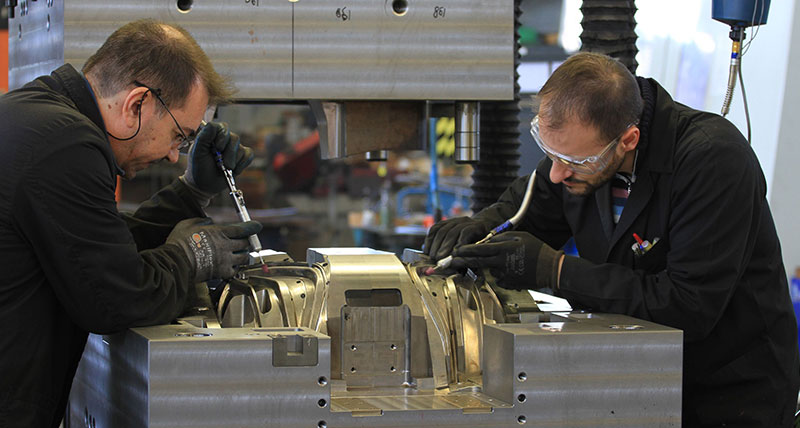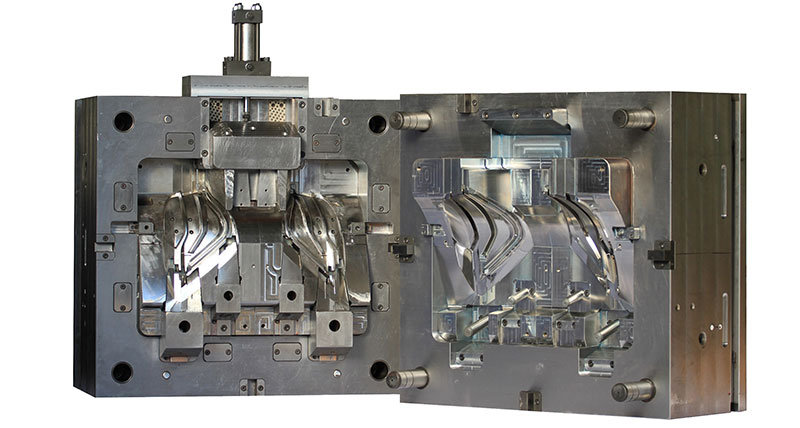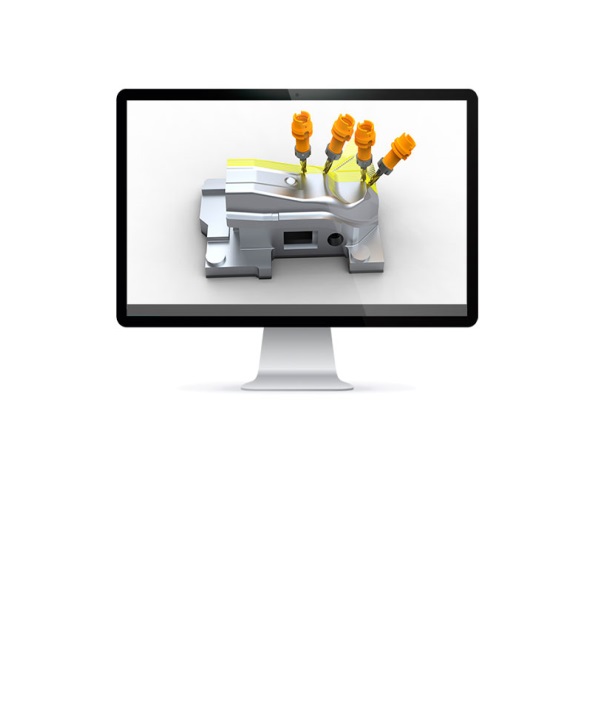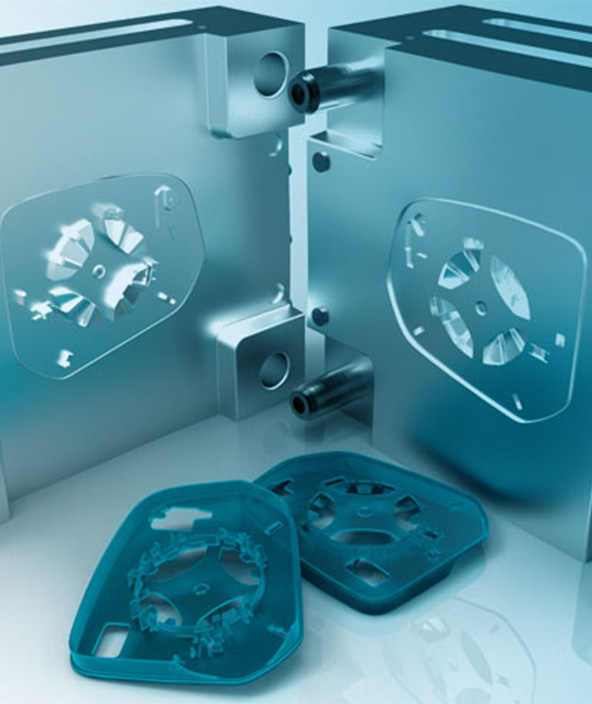VISI's vital role in high-profile research projects for Onni-Stamp
Onni-Stamp - Italy
Contact us

An Italian plastic mould-maker uses a portfolio of VISI CAD/CAM software modules to ensure it stays at the forefront of product development and research.
Onni-Stamp, based in Villafranca d’Asti in the Province of Asti, is a classic example of an Italian family business, but characterised by intense research and development activity, which, according to founder Giorgio Goria, sets it apart from other mould manufacturers.
Set up in 1980, the company combines the experience of expert craftsmanship with state-of-the-art technologies. Onni-Stamp incorporates fully integrated project management into its core business of creating moulds for plastic materials. The owner’s son, Alessio Goria, says the company works alongside the client from the very first stages of the project through co-creation and co-design activities, with the goal of producing products that are easier to manufacture, more cost-effective and of higher quality.
 Once product design is complete, Onni-Stamp uses VISI to assist in finding the most appropriate technical or economic production solutions according to quality requirements, size of production batches and economic investment.
Once product design is complete, Onni-Stamp uses VISI to assist in finding the most appropriate technical or economic production solutions according to quality requirements, size of production batches and economic investment.
“We’ve worked with VISI’s Italian reseller, Vero Solutions, for many years. Their technical and commercial support goes beyond the use of the software, extending to a genuine collaboration in solving particular problems, ranging from managing product deformation to managing the coding of mould components at CAD level,” he says. “For example, we’ve worked with Vero Solutions in the past to create a fibreglass component for the automotive sector, which was characterised by great deformation. The skill and experience of the Vero Solutions team allowed us to create the part, using a specific VISI module.”
Onni-Stamp’s technical department has six VISI stations with VISI Modelling, VISI Flow, VISI Machining, and VISI Mould modules, as well as viewers in the workshop. “VISI plays a vital role at each stage, beginning with research. We work alongside our clients every day in product development and research projects,” explains Alessio Goria. “For example, moulds have been created with channels shaped to guarantee greater cost effectiveness and energy efficiency in moulding with dynamic conditioning, and optimising the models and parameters used to simulate the process through the use of pressure and temperature sensors inside the mould.”
To extend their knowledge and perspective, they have worked on European and regional research projects with universities, research centres and companies regarding the transformation of polymers.
One of the most important was Thermonano, which studied thermally-conducting polymer nanocomposites for making heat exchangers. “We tested the technologies most suited to converting thermally-conducting nanocomposites”, he says. “These are materials of great interest for applications where thermal conductivity, resistance to high temperatures and good mechanical resistance at operating temperature are required at the same time.”
The materials tested had presented certain critical issues and essential differences in transformation with respect to traditional polymers. Onni-Stamp was tasked with simulating and optimising the process using VISI Flow, a unique plastic flow prediction tool, ideal for pre and post production analysis and concurrent engineering of injection moulded components.
A couple of other research projects where VISI played a vital role for them:
- The Microcell regional research project, studying microcellular moulding and its peculiarities, analysing the solutions that could be used to obtain an attractive product. “We analysed the effects of microcellular moulding, in terms of process, deformation and the aesthetic aspect, combining it with dynamic conditioning of the mould. Through optimising variations in the parameters of the process and the design of product and mould, VISI obtained particularly interesting results, such as important reductions in clamping force as well as deformation with microcellular moulding alone. There were also important aesthetic improvements by combining microcellular moulding with dynamic conditioning of the mould.”
- The Drapò regional research project developed high-efficiency integrated auxiliary systems for energy recovery and reducing consumption in motor vehicles. In particular, Onni-Stamp dealt with the industrialisation and transformation of a component made of polymer composites.
As an essential part of their everyday tasks, once the mould has been created, the company then works alongside the client in the first stages of production, providing support for pre-production moulding or for checking product dimensions. With increasing frequency, they also handle the subsequent maintenance, and any modifications to the mould.
Over time, they have developed a complete range of services, all of which can be performed autonomously. “We’re are now seeking to expand our services in two directions: first by creating non-conventional moulds that employ advanced moulding technologies, able to guarantee better end results compared to traditional technologies; and secondly by creating equipment used by clients during the production stage that permits beneficial synergies if well interfaced with the mould.”

Operating in a range of markets including automotive, technical items, healthcare and toys, Onni-Stamp has recently invested in new machinery including a high precision 5-axis machining centre, a high-speed graphite machining centre, and an EDM machine cell.
Referring to the latest software release, the company list a number of new and enhanced functionality in VISI’s 2016 release as particularly valuable for optimising the workflow process, and reducing mould design and production times:
- New options in modelling which allow surface extensions to be rapidly generated for managing sheet parts, and parting lines for plastic moulds.
- Improved performance on integration with solids in reading external formats, including reading and simplifying the management of B.O.M list data.
- The ability to work directly on a solid using 2D, 3+2 or 5-axis processing, which saves time and money, along with calculating and immediately verifying machining angles on 5-axis machine tools.


